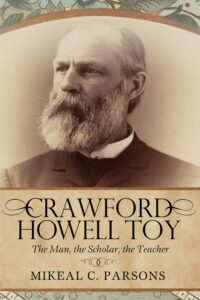 I have finally finished reading Crawford Howell Toy: The Man, the Scholar, the Teacher (Mercer University Press, 2019), by Mikeal C. Parsons, the professor and Macon Chair in Religion at Baylor University. Toy (1836-1919) was Professor of Old Testament and Hebrew at the Southern Baptist Theological Seminary in Louisville, Kentucky, from 1869 until he was forced to resign in 1879 for his liberal theological views. Toy then served as the Hancock Professor of Hebrew and Other Oriental Languages at Harvard from 1880-1909. He eventually left the Baptists and became a Unitarian. The book is a both a fascinating and a captivating read. I only stopped reading it at times because of pressing writing commitments. If you are a Baptist
I have finally finished reading Crawford Howell Toy: The Man, the Scholar, the Teacher (Mercer University Press, 2019), by Mikeal C. Parsons, the professor and Macon Chair in Religion at Baylor University. Toy (1836-1919) was Professor of Old Testament and Hebrew at the Southern Baptist Theological Seminary in Louisville, Kentucky, from 1869 until he was forced to resign in 1879 for his liberal theological views. Toy then served as the Hancock Professor of Hebrew and Other Oriental Languages at Harvard from 1880-1909. He eventually left the Baptists and became a Unitarian. The book is a both a fascinating and a captivating read. I only stopped reading it at times because of pressing writing commitments. If you are a Baptist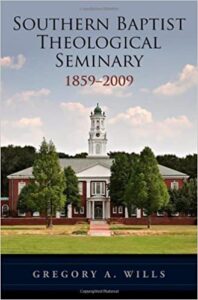 and are not familiar with Toy, then I recommend that you first read the first four chapters of Southern Baptist Theological Seminary 1859-2009 (Oxford, 2009), by Gregory A. Wills, then read the biography of Toy, and then go back and finish the Wills book, which I highly recommend in its entirely. Toy’s downfall, like so many others, was his embrace of higher criticism when he studied in Germany.
and are not familiar with Toy, then I recommend that you first read the first four chapters of Southern Baptist Theological Seminary 1859-2009 (Oxford, 2009), by Gregory A. Wills, then read the biography of Toy, and then go back and finish the Wills book, which I highly recommend in its entirely. Toy’s downfall, like so many others, was his embrace of higher criticism when he studied in Germany.
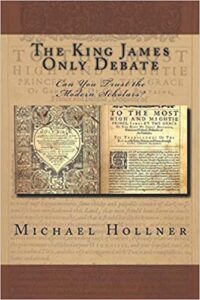 (Read part 1, part 2, part 3, part 4, part 5, part 6). Part 7 will cover chapter 4, “Answering the Critics.” This is the last of just three chapters that have the same title as that listed in the table of contents. As Hollner states at the very beginning: “This chapter is specifically devoted to questions that were asked of us by a ministry called CAnswersTV” (p. 135). There are seventeen questions, each of which is followed by a “preacher response” and a “scholar response,” both written by Hollner. The preacher responses are usually much shorter than the scholar responses. I am not sure about Hollner’s preaching abilities, but he is certainly no scholar. At the end of question and answers 6 and 11, there is a “golden nugget” by Hollner that can, of course, be ignored. After the seventeen questions and answers, Hollner answers eleven additional questions by an unidentified “scholar follower.” The way the questions are worded, I would not be surprised if Hollner wrote them himself.
(Read part 1, part 2, part 3, part 4, part 5, part 6). Part 7 will cover chapter 4, “Answering the Critics.” This is the last of just three chapters that have the same title as that listed in the table of contents. As Hollner states at the very beginning: “This chapter is specifically devoted to questions that were asked of us by a ministry called CAnswersTV” (p. 135). There are seventeen questions, each of which is followed by a “preacher response” and a “scholar response,” both written by Hollner. The preacher responses are usually much shorter than the scholar responses. I am not sure about Hollner’s preaching abilities, but he is certainly no scholar. At the end of question and answers 6 and 11, there is a “golden nugget” by Hollner that can, of course, be ignored. After the seventeen questions and answers, Hollner answers eleven additional questions by an unidentified “scholar follower.” The way the questions are worded, I would not be surprised if Hollner wrote them himself.
Hollner is hopelessly confused about the meaning of the words “reprints” and “revisions” (pgs. 137, 139). He is likewise confused about manuscripts and texts and editions (p. 142). Twice in this chapter, Hollner gives the wrong number of words in the Bible (pgs. 140, 169). He implies, wrongly, that the Apocrypha was removed from King James Bibles published after 1611 (p. 141). The King James translators did not have available “thousands of other resources” (p. 142). The word “nonsense” is misspelled “nonsence” (p. 143). It is bad enough that Hollner underlines so many words, but it is inexcusable that his underlines continue past the words that are underlined (p. 144). Modern versions don’t “change every few years by order of the Vatican” (p. 147). What Hollner says about the King James Version and copyright should be corrected by what I say in my book King James, His Bible, and Its Translators (pgs. 160-161). Throughout this chapter, Hollner can’t decide on the format to use to refer to numbered centuries, even on the same page (p. 155): “10th Century” and “7th century.” The NAS should be the NASB (p. 152). Hollner’s needless capitalization of so many words in this chapter is very annoying, as is his mixed use of straight and curly quotation marks. Stay tuned for the eighth installment.
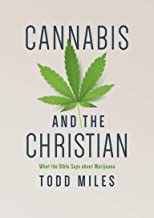 My review of Cannabis and the Christian: What the Bible Says about Marijuana (B&H Publishing, 2021), by Todd Miles, was recently published at LewRockwell.com. I have reviewed a few other books on the subject of marijuana, but not one from a Christian perspective.
My review of Cannabis and the Christian: What the Bible Says about Marijuana (B&H Publishing, 2021), by Todd Miles, was recently published at LewRockwell.com. I have reviewed a few other books on the subject of marijuana, but not one from a Christian perspective.
 The new commentary on 1 Peter by Craig Keener, professor of Biblical Studies at Asbury Theological Seminary, and one of my favorite commentators and writers, was recently published by Baker Academic. At 656 pages, it is one of the most massive commentaries on 1 Peter that I have ever seen (and I have seen a lot of commentaries on 1 Peter). 1 Peter by John Elliott in the Anchor Bible series (2000) is 956 pages, but not as evangelical a work as Keener’s. The two-volume work on 1 Peter by John Brown (1807-1858) in the Geneva series is the largest. Keener is always worth consulting and reading, even if one does not accept all of his conclusions. This volume will certainly become the standard work on 1 Peter like Keener’s four-volume work on Acts has become.
The new commentary on 1 Peter by Craig Keener, professor of Biblical Studies at Asbury Theological Seminary, and one of my favorite commentators and writers, was recently published by Baker Academic. At 656 pages, it is one of the most massive commentaries on 1 Peter that I have ever seen (and I have seen a lot of commentaries on 1 Peter). 1 Peter by John Elliott in the Anchor Bible series (2000) is 956 pages, but not as evangelical a work as Keener’s. The two-volume work on 1 Peter by John Brown (1807-1858) in the Geneva series is the largest. Keener is always worth consulting and reading, even if one does not accept all of his conclusions. This volume will certainly become the standard work on 1 Peter like Keener’s four-volume work on Acts has become.
 (Read part 1, part 2, part 3, part 4, part 5). Part 6 will cover chapter 3, “Attacks on Doctrine.” This is one of only three chapters that has the same title as that listed in the table of contents. Like chapter 2, this chapters deals with omissions in modern versions. The difference here is that chapter 3 covers the major omissions that involve doctrine. Covered are Mark 16:9-20 (the resurrection and ascension), Acts 8:37 (salvation by faith alone), 1 John 5:7 (the Trinity), Colossians 1:14 (the blood of Christ), and 1 Timothy 3:16 (the deity of Christ). Hollner is certainly correct in bringing up the serious nature of these omissions. However, they are treated in his usual bombastic and error-ridden style.
(Read part 1, part 2, part 3, part 4, part 5). Part 6 will cover chapter 3, “Attacks on Doctrine.” This is one of only three chapters that has the same title as that listed in the table of contents. Like chapter 2, this chapters deals with omissions in modern versions. The difference here is that chapter 3 covers the major omissions that involve doctrine. Covered are Mark 16:9-20 (the resurrection and ascension), Acts 8:37 (salvation by faith alone), 1 John 5:7 (the Trinity), Colossians 1:14 (the blood of Christ), and 1 Timothy 3:16 (the deity of Christ). Hollner is certainly correct in bringing up the serious nature of these omissions. However, they are treated in his usual bombastic and error-ridden style.
The list of allusions to Mark 16:9-20 from ancient Christian writers (pgs. 89-90) is taken without attribution from the website of the Trinitarian Bible Society (TBS). The quote attributed to Burgon (p. 91) not only has words omitted, it is not even from Burgon. It is from F. H. A. Scrivener’s A Full Collation of the Codex Sinaiticus with the Received Text of the New Testament (p. xv). Hollner here repeats the error of the TBS, but at least the TBS gave a book title and page number, even if they were wrong. Hollner questions the antiquity of Codex Vaticanus and Codex Sinaiticus, but then says that Codex A and Codex C are “fifty years later” (p. 91). Although it is true of Sinaiticus that the leaf containing the end of Mark and the beginning of Luke is a cancel sheet, it has never been established that it was rewritten to exclude the ending of Mark (p. 92). Clearly, Hollner has never read Milne and Skeat’s Scribes and Correctors of the Codex Sinaiticus (British Museum, 1938). But perhaps Hollner can be forgiven for this statement, since he just copied it and many other sentences in this chapter from the TBS, again, without attribution. Hollner is quite the plagiarist.
On Acts 8:37, the fact that the verse “is found in the Greek texts of Stephanus 1550, Beza, and Elzevir” should not be included as “evidence in favor of including this verse” (p. 97). Hollner refers to the work of David Daniels on Sinaiticus, but never mentions the title, and adds an apostrophe to the end of Daniels last name (p. 100). The statement that Codex Vaticanus “is missing many complete books of the Bible” (p. 100) is misleading. The books are not missing because scribes thought they were spurious. They are simply missing. Hollner’s attempt at humor (p. 100) falls flat, like the book itself. It is incorrect that “many modern versions are even now fraudulently including the Apocryphal writings within their texts” (p. 100). No wonder Hollner never mentioned any. And he never explains how he knows that the King James translators only “reluctantly” included the Apocrypha (p. 101).
On 1 John 5:7, Hollner chastises Bruce Metzger for omitting mention of Codex 629 in his textual commentary (p. 105-106). True, it is not mentioned in his second edition (1994), but it is mentioned in the first edition (1971) and in his book The Text of the New Testament. Hollner actually gives the source of a quotation (p. 105), although he omits the author’s name (Roland Bainton) and botches the publisher’s name (Charles Scribner’s Sons, not “& Son”). But it turns out that the quotation from Erasmus is not a quotation at all, just Hollner’s rough approximation of what Erasmus said. His reference to Rummel (p. 110) contains no book title or page number. In the course of two sentences, Hollner refers to Stephanus as Robert Estienne, Stephanus, and Stephens, without an explanation as to the difference in names (p. 110). I seriously doubt that Hollner could “author a 1000-page book on I John 5:7 alone” (p. 111). Hollner’s reasoning is flawed when he states that there are only “13 Greek witnesses prior to the 10th Century that leave the verse out” (p. 113) but never tells his readers that there are none that contain it. There are not “hundreds of Church father witnesses” to 1 John 5:7 (p. 116). Hollner’s remarks on Erasmus and 1 John 5:7 should be corrected by the information I have in my forthcoming chapter 5 of The Text of the King James Bible. It would be nice if Hollner knew how to capitalize book titles (pgs. 117, 123). And speaking of titles, the “N.A.S.” (p. 119) should be the “NASB.” Hollner’s classification of seven languages to match Psalm 12:6-7 is artificial (p. 120). Charles Forster’s “A new plea for the three heavenly witnesses” (p. 123) is actually titled A New Plea for the Authenticity of the Text of the Three Heavenly Witnesses. Hollner’s quote from this work contains an addition that he mentions, but also one that he does not (p. 123). And regarding the quote, he misspells “Wordsworth” as “Wordsworts.”
There is not much to say about Hollner’s treatment of Colossians 1:14 and 1 Timothy 3:16. All his images of Greek manuscripts will mean nothing to the average reader, of which I hope there are few. In closing, I would like to say one more thing that applies to the whole chapter: I wish Hollner knew how to use a comma. Stay tuned for the seventh installment.
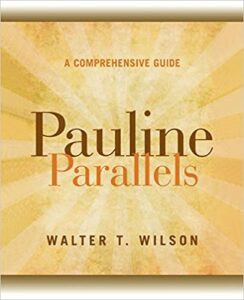 If you come across a cheap copy of Pauline Parallels by Fred Francis and J. Paul Sampley (Fortress Press, first ed., 1975, second ed. 1984), don’t buy it. Because the authors didn’t believe that Paul actually wrote thirteen epistles, they presented just ten of Paul’s epistles with relevant passages from elsewhere in the Pauline corpus. A much better choice is Pauline Parallels: A Comprehensive Guide (Westminster John Knox Press, 2009), by Walter T. Wilson, who should not be confused with the Christian writer and medical doctor Walter L. Wilson (1881-1969). The newer and better work, which “builds on the success of Francis and Sampley’s fine work” (p. ix), covers all thirteen of Paul’s epistles. The text used is the NASB. Yes, it is not King James, but is a better than the RSV of the Francis Sampley editions.
If you come across a cheap copy of Pauline Parallels by Fred Francis and J. Paul Sampley (Fortress Press, first ed., 1975, second ed. 1984), don’t buy it. Because the authors didn’t believe that Paul actually wrote thirteen epistles, they presented just ten of Paul’s epistles with relevant passages from elsewhere in the Pauline corpus. A much better choice is Pauline Parallels: A Comprehensive Guide (Westminster John Knox Press, 2009), by Walter T. Wilson, who should not be confused with the Christian writer and medical doctor Walter L. Wilson (1881-1969). The newer and better work, which “builds on the success of Francis and Sampley’s fine work” (p. ix), covers all thirteen of Paul’s epistles. The text used is the NASB. Yes, it is not King James, but is a better than the RSV of the Francis Sampley editions.
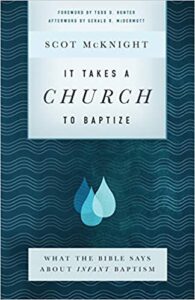 My review of Scot McKnight’s book It Takes a Church to Baptize: What the Bible Says about Infant Baptism (Brazos Press, 2018) was recently published in the Ancient Baptist Journal. The title of the book ought to be What the Bible Doesn’t Say about Infant Baptism. This is definitely McKnight’s worst book.
My review of Scot McKnight’s book It Takes a Church to Baptize: What the Bible Says about Infant Baptism (Brazos Press, 2018) was recently published in the Ancient Baptist Journal. The title of the book ought to be What the Bible Doesn’t Say about Infant Baptism. This is definitely McKnight’s worst book.
 (Read part 1, part 2, part 3, part 4). Part 5 will cover chapter 2, “The Deleted and Missing Words of God.” In the table of contents this is called “Missing Verses and Words.” Bible-believers have been pointing out the missing verses, clauses, phrases, and words from the New Testament of modern versions since the Revised Version came out in 1881. In my book King James, His Bible, and Its Translators (2nd ed.), in chapter 26, “The King James Version and Modern Versions,” there is an extensive list of the verses, clauses, phrases, and words omitted in the New Testament of modern versions. Hollner has nothing new to add here. And if he is going to discuss omissions in the Bible, then he should at least get the total number of words in the King James Bible correct. His figure of 783,820 words is not even close to the true number of 789,630 (p. 69).
(Read part 1, part 2, part 3, part 4). Part 5 will cover chapter 2, “The Deleted and Missing Words of God.” In the table of contents this is called “Missing Verses and Words.” Bible-believers have been pointing out the missing verses, clauses, phrases, and words from the New Testament of modern versions since the Revised Version came out in 1881. In my book King James, His Bible, and Its Translators (2nd ed.), in chapter 26, “The King James Version and Modern Versions,” there is an extensive list of the verses, clauses, phrases, and words omitted in the New Testament of modern versions. Hollner has nothing new to add here. And if he is going to discuss omissions in the Bible, then he should at least get the total number of words in the King James Bible correct. His figure of 783,820 words is not even close to the true number of 789,630 (p. 69).
I am glad to know that the author “will participate in exploring the Greek a few times in this book to let the audience know that we do have the necessary skills to be able to alert the Church” (p. 55). One would think, then, that Hollner would refer throughout to the latest edition (the 28th) of the Nestle-Aland Greek New Testament, published in 2012, instead of the 27th edition, published in 1993. It is not correct to say that “with every new Nestle’s Greek edition that comes out, changes are being made” (p. 70). The text in the 26th and 27th editions is the same.
Hollner has a very simplistic view of textual criticism: if a Greek word or phrase appears in the majority of manuscripts, then it is the correct word or phrase. He changes his tune, however, when he discusses 1 John 5:7 in chapter 3.
The picture of the author next to the picture of Dean Burgon under the heading of “The Bible Believers Team of Divine Inspiration and Holy Preservation” is laughable (p. 54). Not only would Dean Burgon never join the Dean Burgon Society, he would never make the statements about the King James Bible that Hollner does.
Mistakes abound. I note the following. The combination “very-best” (p. 52) is not a word, and neither is it necessary to add “very” to “best,” for if something is the best, then adding “very” to it adds nothing. Not sure why Hollner refers to the New King James Version as “so-called” (pgs. 66 & 76) since that is its actual name. But at least he gets the name right. It is incorrect to refer to the NASB as the NAS (pgs. 70 & 82). And to refer to “the N.I.V. and the N.A.S. versions” (p. 51) is incorrect, and not just because the periods are unnecessary (Hollner uses NIV on pgs. 68 & 70). He should have said “The NIV and the NASB” or “The New International and the New American Standard versions.” Similarly, he can’t decide whether to use “T.R.” (pgs. 63 & 72) or “TR” (pgs. 55 & 56). Like he does in the rest of the book, Hollner capitalizes words that do not need to be capitalized. But then he carelessly fails to capitalize the word “latin” (p. 65). It is worse than careless to omit spaces between words (pgs. 55 & 65). The percent symbol (pgs. 56, 57, & 84) should be spelled out. He refers to his first chapter, one of the few that actually has the same title as that listed in the table of contents, as “Advantage KJV” instead of “The King James Advantage” (p. 55). It is inexcusable to cite a source as “Ruckman; Riplinger” (p. 69) with no book titles or page numbers. Stay tuned for the sixth installment.
I received an e-mail recently from Westminster John Knox Press (WJK) of Louisville, Kentucky, informing me of a 50 percent discount with the promo code WJK21 until the end of the year. In addition, shipping is free on all orders over $50. The only problem is that there is not much of value put out by this publisher. And not wonder, for WJK is “the academic and trade imprint of the Presbyterian Publishing Corporation (PPC)” The PPC is the publishing agency of the Presbyterian Church (USA), the largest and most progressive Presbyterian denomination. Visit one of these churches and you might find not only a woman pastor, but a gay or lesbian pastor.
According to WJK, “Books and resources published under the WJK imprint cover the spectrum of religious thought and represent the work of scholarly and popular authors of many different religious and theological affiliations. WJK publishes approximately 60 new books and other resources each year and manages a backlist of more than 1,800 titles that are sold throughout the world.”
WJK was formed in 1988 by a merger between Westminster Press of Philadelphia and John Knox Press of Richmond and Atlanta. The definitive English edition of Calvin’s Institutes was published by Westminster Press in 1960 as part of the Library of Christian Classics. This is, I think, the only book published by Westminster Press or John Knox Press that I still own. Years ago, when I still had over 500 books related to Calvinism, I had some other titles published by these publishers in addition to Reformed books published by WJK, like The Writings of John Calvin: An Introductory Guide, expanded ed. (2008), by Wulfert de Greef, which I highly recommend.
I used to own an earlier edition of The Letters of Paul: Conversations in Context (6th ed., 2015), by Calvin J. Roetzel. It is an okay book. I own and have read the following recent books published by WJK: The Genesis of Good and Evil: The Fall(out) and Original Sin in the Bible (2019), by Mark S. Smith; Ancient Jewish and Christian Scriptures: New Developments in Canon Controversy (2020), by John J. Collins, Craig A. Evans, and Lee Martin McDonald. I can only recommend the latter book. I own Forgotten Scriptures: The Selection and Rejection of Early Religious Writings (2009), by Lee Martin McDonald, and Paul and Perseverance: Staying in and Falling Away (1991), by Judith M. Gundry Volf, but I have only briefly looked through them. I have the reference book Pauline Parallels: A Comprehensive Guide (2009), by Walter T. Wilson, which I recommend and will mention in a future post. WJK publishes a commentary on the New Testament as part of The New Testament Library. I have the volume on Galatians, for reasons I have already explained. It is one of the better volumes in the series, some of which are written by women. I would like to see the new volume on Matthew by R. Alan Culpepper, but it is not yet available. Nothing in the Interpretation or Belief commentary series is worth reading. For information on baptism and the Lord’s supper from a Reformed perspective, but not a scriptural perspective, I recommend for research two books by John W. Riggs in the 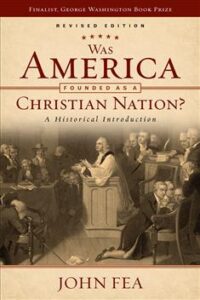 Columbia Series in Reformed Theology: Baptism in the Reformed Tradition: An Historical and Practical Theology (2002) and The Lord’s Supper in the Reformed Tradition: An Essay on the Mystical True Presence (2015). One WJK title that I can highly recommend is Was America Founded as a Christian Nation? A Historical Introduction, rev. ed. (2016), by John Fea.
Columbia Series in Reformed Theology: Baptism in the Reformed Tradition: An Historical and Practical Theology (2002) and The Lord’s Supper in the Reformed Tradition: An Essay on the Mystical True Presence (2015). One WJK title that I can highly recommend is Was America Founded as a Christian Nation? A Historical Introduction, rev. ed. (2016), by John Fea.
Is there anything else published by WJK that I can recommend? Certainly not the new book God and Guns: The Bible against American Gun Culture, edited by C.L. Crouch and Christopher B. Hays. Certainly not these two pro-abortion books: Abortion and the Christian Tradition: A Pro-choice Theological Ethic (2019), by Margaret D. Kamitsuka; Pro-Choice and Christian: Reconciling Faith, Politics, and Justice (2017), by Kira Schlesinger. Certainly not Unashamed: A Coming-Out Guide for LGBTQ Christians (2019), by Amber Cantorna. Certainly not UnClobber: Rethinking Our Misuse of the Bible on Homosexuality (2016, expanded ed. 2022), by Colby Martin.
If you ever receive an e-mail from WKJ, you can probably delete it. You are not missing anything.
I have often been asked who my favorite Christian writers are. Off the top of my head, without looking through my library, I would say that my favorite living writers are Craig Keener, Ben Witherington, Stanley Porter, and Douglas Moo. My favorite dead writers are F.F. Bruce, John Walvoord, Charles Ryrie, Arthur W. Pink, Leon Morris, and John Murray. Just off the top of my head, my favorite secular writers are Murray Rothbard and H. L. Mencken (both deceased) and Andrew Napolitano and James Bovard (both living, and both of whom I am privileged to know).
It goes without saying that I don’t necessarily agree with everything that these men believe or have written.